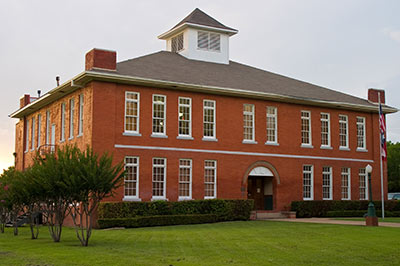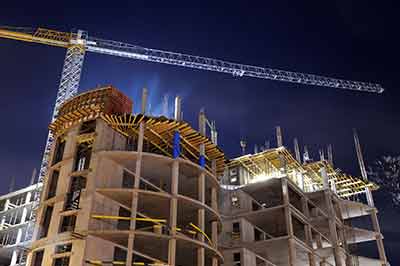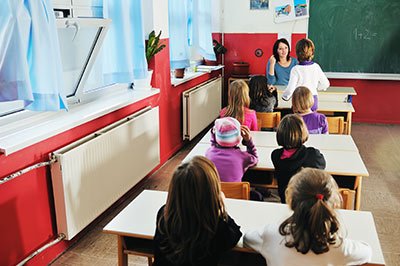Tag: Construction Management
Planning for Schools & Liveable Communities: The Oregon School Siting Handbook
In 2004, the Oregon Transportation and Growth Management Program contracted with the Community Planning Workshop (CPW) at the University of Oregon to conduct a year-long evaluation of Oregon’s school siting process. The purpose of the evaluation was twofold: (1) to develop a better understanding
of the challenges and opportunities school districts and local governments experience when making school siting decisions; (2) to empower school districts and local governments to make more informed decisions about future school siting. This handbook is the culmination of that research and synthesizes many of the lessons learned.
As part of the study, CPW performed the following tasks:
Literature Review: Conducted an extensive review of literature about school siting issues.
Case Studies: Investigated the school siting practices of eight school districts around the state through site visits and interviews with school superintendents, school facility planners, local government planners, architects, and neighborhood groups. Administered a school transportation survey and conducted focus groups at four middle schools to learn more about how children get to and from school.
School Superintendent Survey: Created a survey, disseminated to school district superintendents, focusing on district needs and siting issues.
Oregon School Siting Forum: Held a statewide conference encouraging dialogue about school siting issues by a wide range of people, including school district personnel, architects, planners, health advocates, and neighborhood organizers.
Planning For A School Building Renovation
Earthman and Cash, 2016
Many school systems in the United States face the prospect of renovating existing buildings rather than constructing new facilities because of budgetary limitations and constraints. The least disruption to the educational process when a building is scheduled for renovation is to move the student body to a vacant building. This option is not available to the vast majority of school systems and the student body must remain in the building while the renovation takes place. Students are moved from space to space in the building as renovation takes place. Obviously the renovation process is a disruption to the educational process. Some research substantiates this assertion (Maxwell, 1996). She found that the student achievement scores dropped during the period of renovation in both the third and sixth grade mathematics and reading scores. The student scores increased when the students returned to newly renovated buildings. There is some recent research, however, that indicates student performance during the renovation process is not as disrupted as previously thought. Mayo (2010), Norman (2014), and Thompson (2014) investigated the influence a renovation had upon student achievement while enrolled in a building during a renovation. They compared student scores during three time periods – pre-renovation, during the renovation and post renovation. All of the researchers found there was no significant difference in student scores during all three phases of the renovation process. Additional research (Wheeler, 2014) suggests that teachers may be doing something to keep student performance at a high level during a disruption of the educational program. In Wheeler’s study of teacher reaction to such a disruption, teachers suggested that close collaboration, focusing upon the necessary elements of the curriculum, increased use of technology, and collaboration of faculty to provide resources for alternative activities in the classroom might help keep students on task and perform better. Such activates on the part of the faculty might ease the disruption of a renovation and maintain student progress.
Battling School Construction Delays
School Planning and Management, 2015
A $23-million high school in Wyoming slated to open in mid-January has been delayed for two months. The contractor on the project blamed weather, change orders, design changes and other factors.
The district superintendent disputed the contractor’s explanation.
20th Annual School Construction Report: National Statistics Building Trends & Detailed Analysis
School Planning and Management, 2015
School Construction is once again a major player in the economy of the United States. More than $14 billion worth of school construction - including new buildings and additions to, and upgrading of, existing buildings - was put in place in 2014, a five percent increase over the previous year and the fourth year in a row that spending for school construction has increased.
School Construction and Renovation: A Review of Federal Programs
Dortch, 2013
By some measures, the United States spent over $55.4 billion on new construction, additions, and alterations in public elementary and secondary schools and public and private postsecondary institutions in 2011. Although state and local governments are traditionally responsible for the majority of facilities in public K-12 schools and postsecondary institutions, the federal government also provides some direct and indirect support for school infrastructure. Facilities at private institutions are funded primarily by donations, tuition, private foundations, endowments, and governments. The largest federal contributions are indirect—the forgone revenue attributable to the exemption of interest on state and local governmental bonds used for school construction, modernization, renovation, and repair; and other tax credits.
Federal direct support for school infrastructure is provided through loans and grants to K-12 schools serving certain populations or K-12 schools with specific needs. There are grant programs for schools with a high population of students who are Alaska Natives, Native Hawaiians, Indians, children of military parents, individuals with disabilities, or deaf. Funding is also available to schools affected by natural disasters or located in rural areas. And there are programs to encourage the development of charter schools. Although the Department of Education administers several of the grant programs funding facilities at elementary and secondary schools, other agencies, such as the Department of the Interior and the Department of Defense, also administer programs.
At the postsecondary level, there are several programs to support institutions of higher education that serve large low-income or minority populations and to support research facilities. The allowable uses of funds in the programs authorized primarily by Titles III and V of the Higher Education Act of 1965, as amended, variously include construction, maintenance, renovation, and improvement of instructional facilities and acquisition of land on which to construct instructional facilities. There are programs administered by the U.S. Department of Education and other agencies, such as the National Endowment for the Humanities and the U.S. Department of Commerce, that support postsecondary research facilities, facility renovations at minority-serving postsecondary institutions, telecommunications, disaster relief at postsecondary institutions, and other uses.
This report provides a short description of federal allowances and programs that provide support for the construction or renovation of educational facilities. The allowances and programs are organized by the agency that administers or regulates the program. Appropriations and budget authorities are included for FY2012 and FY2013. These programs exist in various forms and responsibility for their administration is spread across many agencies; thus, the list of programs presented should not be considered a fully exhaustive list of all federally funded programs that support school facilities and infrastructure at least in part.
How to Cut the Cost of Your New School Building
Fickes, 2014
When evaluating responses to bid requests, facility managers often select the lowest qualified bid. It makes perfect sense. Why would anyone pay more — in taxpayer dollars — than necessary?
In fact, some school facility managers are discovering the utterly anti-intuitive concept that paying more to build a school can reduce its overall total cost of ownership (TCO).
PK-12 Public Educational Facilities Master Plan Evaluation Guide
21st Century Schools, 2011. Proper planning of school facilities is critical for all school districts no matter how large or small, whether major construction is in the works or the district is managing enrollment declines. When school districts properly plan for their school facilities they have better schools, more public use and higher value for public spending. This evaluation guide was designed for superintendents and school boards that are called on to develop or sign off on plans, but who generally may not have extensive experience with educational facility planning. It can also be used to help community members participate in high quality educational facility planning.
An Educational Facilities Master Plan is a written document that describes the school district’s real estate and capital improvement requirements and its strategy and school specific plans for meeting these requirements over a 6-10 year period. On the real estate side, educational facility master plan elements will address the space needs for schools, administration and logistics, including proposed site selection, school closings and consolidations, attendance boundary changes, leasing, joint use and co-locations. On the capital improvement side, educational facility master plan elements will include: the justification, scope, schedule and estimated cost for major repairs, modernization and new construction.
School Facilities Cost Calculator
21st Century Schools Fund, 2013. The School Facilities Cost Calculator is pre-loaded with rich data from 15,000 school districts and provides step-by-step guidance in crafting an effective, transparent joint-use policy. This easy-to-use, adaptable calculator helps school system leaders:
- Identify all facility-related expediters in their district
- Calculate the full cost of ownership on a per square foot and per hour basis
- Formulate a multi-tiered fee structure for different types of community users
Creating Jobs Through FAST!, a Proposed New Infrastructure Program to Repair America’s Public Schools
Mary Filardo, Jared Bernstein, and Ross Eisenbrey, 2011. The average U.S. public school building is 40 years old, and many are much older. The cost of maintaining nearly 100,000 public schools and facilities in good repair is enormous. According to the Government Accountability Office and the American Society of Civil Engineers, school districts have been under-spending on maintenance and repair for many years. Chronic deferred maintenance and repair can lead to energy inefficiencies, unsafe drinking water, water damage and moldy environments, poor air quality, inadequate fire alarms and fire safety, compromised building security, and structural dangers.
A national project to address this backlog could create hundreds of thousands of jobs, including jobs for construction workers, building technicians, boiler repairmen, electrical workers, roofers, plumbers, glaziers, painters, plasterers, laborers, and tile setters. It could also lead to the direct hire of building maintenance workers to help slow or prevent the deterioration of buildings and building systems, while generating new savings through energy conservation.










